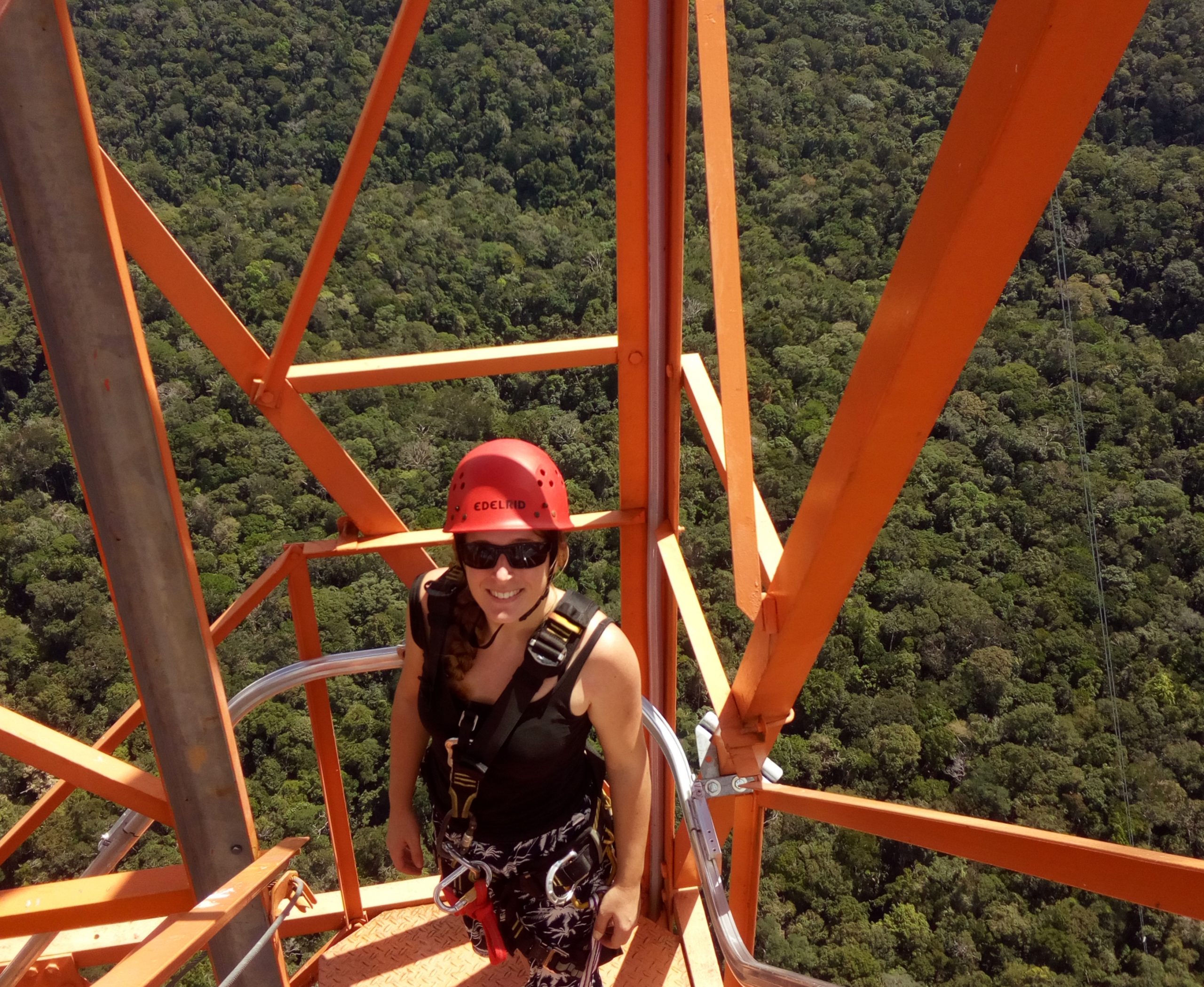Hello everybody, my name is Hella van Asperen. I am a PostDoc at the Institute of Environmental Physics in Bremen (Germany), in the group of Prof. Notholt, but currently live and work in Manaus. I started my studies at Wageningen University in the Netherlands with the Bachelor program ‘Soil, Water, Atmosphere’. That I followed with a Masters in ‘Soil Science’ and ‘Earth System Science’. I really enjoyed the interdisciplinary aspect of those programs. It’s fascinating to me how different living and non-living parts of the ecosystem interact, e.g. plants and microbes with the atmosphere. As part of my Master’s project, I got to visit the University of California, Davis, to help set up an experiment focusing on soil CO2 fluxes. This is when I became really enthusiastic about science. So I decided to pursue a PhD in Bremen, a city in northern Germany.
In my PhD research, I explored the use of an FTIR-spectrometer to monitor fluxes of gases such as CO2 and methane in different ecosystems. I built a setup to study different ecosystem processes, such as soil respiratory isotopic fractionation and abiotic thermal degradation. This ended up working really well, which lead to the idea to use this system in one of the most interesting ecosystems in the world: the Amazon rainforest. The Amazon rainforest contains many wetlands and is considered a key region for tropical methane emissions. But measurements are rare and the processes are not well understood.
So in August of 2018, I moved to Manaus to work on this together with INPA. My goal was to build up and start a long term measurement campaign of concentrations and emissions of methane and other gases with my FTIR-spectrometer. Currently, it is installed at the K34-tower, a 51 m flux tower at the field site ZF2 near Manaus. To complement these continuous measurements, I am measuring local soil, tree and termite emissions with a flux chamber and a portable instrument. Additionally, I am also measuring methane emissions at ATTO. At both sites, we observe strong peaks in methane concentrations, but we don’t know what causes them. We have an idea though: it might be related to the streams in the valleys that cut into the plateau. To test this theory, we use a mobile sample system, which can measure methane concentrations in the valley. Furthermore, in the coming months, I will help to set up a FTIR-spectrometer at the ATTO tall tower.
Unfortunately, my project is ending soon and I don’t yet know what the future holds for me. My time in Manaus and being a part of the ATTO team has been an amazing experience. I hope I will be able to continue to study these processes one way or another!


